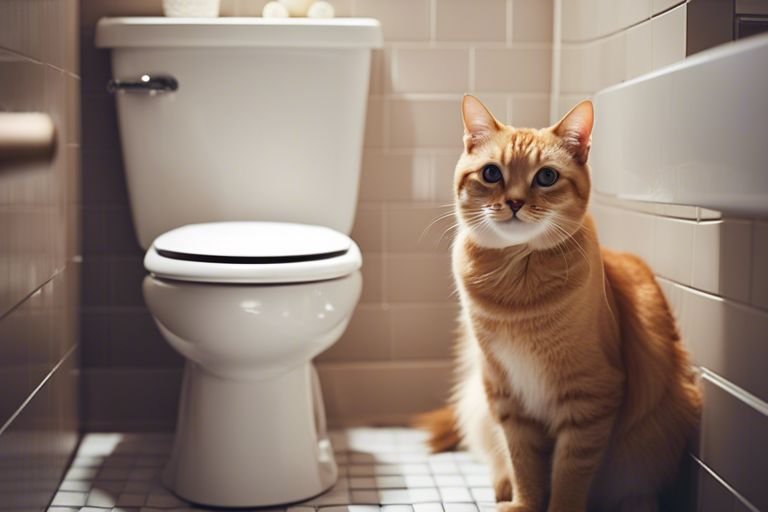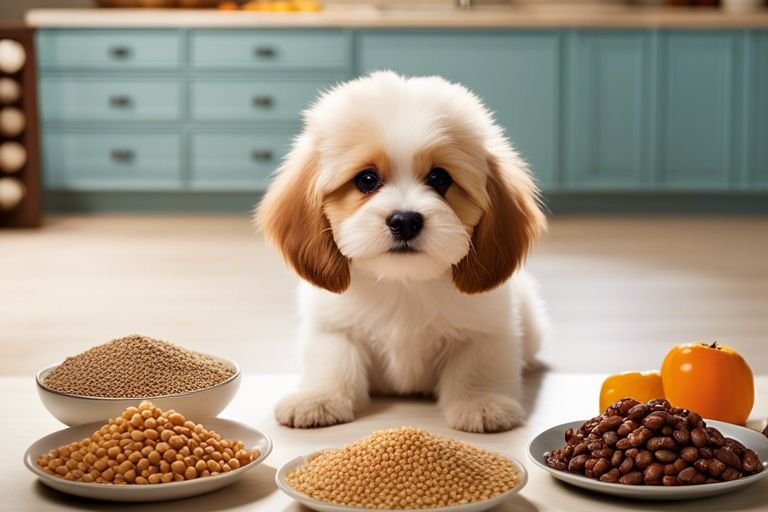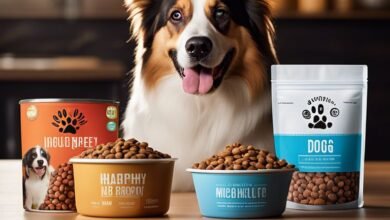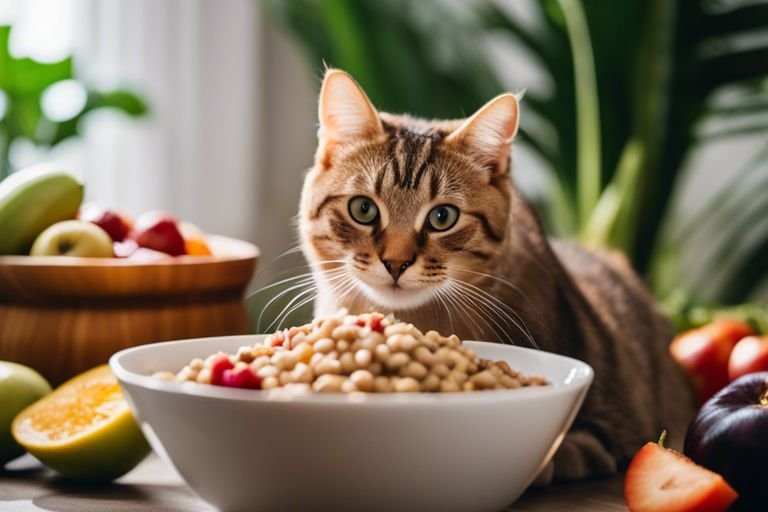
Wet your whiskers and get ready to pamper your feline friend with delicious homemade gluten-free wet cat food recipes. Just like preparing a gourmet meal for yourself, creating a nutritious and safe meal for your beloved pet can be a rewarding experience. With a few simple ingredients and some love in the kitchen, you can ensure that your cat is getting the best quality food without any gluten additives that may cause sensitivity. Let’s get cooking!
Key Takeaways:
- Choosing the right ingredients: When making gluten-free wet cat food at home, be sure to select high-quality proteins like chicken, turkey, or fish, along with gluten-free grains like rice or quinoa.
- Importance of hydration: Wet cat food recipes provide imperative moisture content that is crucial for your cat’s hydration, especially if they don’t drink enough water.
- Balancing nutrients: It’s vital to create a well-balanced meal that includes proteins, fats, vitamins, and minerals to meet your cat’s dietary needs.
- Avoiding harmful additives: By making your own gluten-free wet cat food, you can ensure that it doesn’t contain any artificial colors, flavors, or preservatives that could be harmful to your cat’s health.
- Consulting with a veterinarian: Before making any changes to your cat’s diet, it’s always wise to consult with a veterinarian to ensure that the homemade recipes meet your cat’s nutritional requirements.

The Importance of Gluten-Free Diets for Cats
Before venturing into making your own gluten-free wet cat food recipes, it’s imperative to understand the significance of gluten-free diets for cats. Just like with humans, some cats can be sensitive or intolerant to gluten, a protein found in grains like wheat, barley, and rye. Gluten intolerance or allergies can cause digestive issues, skin irritations, and overall discomfort in your feline friend.
Common Food Allergies in Cats
On your journey to understanding the importance of gluten-free diets for cats, it’s crucial to be aware of common food allergies in felines. Besides gluten, some cats may also be allergic to other ingredients commonly found in cat food, such as dairy, beef, fish, or eggs. These allergies can manifest as itching, vomiting, diarrhea, or skin issues.
Symptoms of Gluten Intolerance in Felines
One sign that your cat might be intolerant to gluten is chronic digestive problems like diarrhea, constipation, or frequent vomiting. Other symptoms can include skin irritations, excessive licking or scratching, hair loss, or even ear infections. If you notice these signs, it’s imperative to consult your veterinarian to determine if gluten could be the culprit of your cat’s discomfort.
With proper care and attention to their diet, you can help your beloved feline friend live a happy and healthy life free from the discomforts of gluten intolerance. By understanding common food allergies in cats and recognizing the symptoms of gluten intolerance, you can make informed decisions about what to feed your pet to keep them thriving.
Essential Ingredients for Gluten-Free Wet Cat Food
Clearly, creating your own gluten-free wet cat food requires the right combination of ingredients to ensure your feline friend gets all the nutrients it needs. Let’s explore some vital components you’ll need to consider when preparing homemade gluten-free wet cat food.
Protein Sources: Meat, Fish, and Poultry
An important component of your cat’s diet is protein, which can come from various sources like meat, fish, and poultry. These protein sources are vital for your cat’s muscle development, immune system function, and overall health. When opting for protein sources for your cat’s food, opt for high-quality, lean options to ensure your cat gets the best nutrition.
Vegetables and Fruits for Added Nutrition
Protein alone is not enough to provide your cat with all the vital nutrients it needs. Vegetables and fruits can add vitamins, minerals, and fiber to your cat’s diet, promoting overall health and well-being. Mixing in vegetables like carrots, peas, or fruits like apples or blueberries can enhance the nutritional value of your cat’s homemade gluten-free wet food.
Sources of vital nutrients such as antioxidants, vitamins, and minerals can be found in vegetables and fruits. These nutrients can help support your cat’s immune system, digestion, and overall health.
Healthy Fats and Oils for Skin and Coat Health
Ingredients rich in healthy fats and oils are crucial for maintaining your cat’s skin and coat health. Consider incorporating ingredients like salmon oil, coconut oil, or flaxseed oil into your cat’s homemade wet food to promote a shiny coat and healthy skin. These fats also provide vital fatty acids that are beneficial for your cat’s overall well-being.
Fats play a vital role in your cat’s diet, helping to maintain healthy skin, a shiny coat, and promote overall wellness. Including the right fats and oils in your cat’s gluten-free wet food can contribute to your cat’s overall health and happiness.

Simple Recipes for Gluten-Free Wet Cat Food
Keep this resource handy for inspiration when making homemade wet cat food. Creating gluten-free meals for your feline friend can be easy and rewarding. Here are a few simple recipes to get you started on your cat culinary journey.
Recipe 1: Whisker Whip (Chicken and Sweet Potato)
Food
For this whisker-licking good recipe, you’ll need cooked chicken, mashed sweet potato, and a bit of water for consistency. Simply combine the ingredients and mix well. Adjust the water amount to achieve the desired texture – smooth but not too runny. Serve it up fresh to your furry companion for a delightful dining experience.
Recipe 2: Purr-fect Puree (Salmon and Green Beans)
Salmon
Whip up a meal fit for a royal cat with this purr-fect puree. Blend cooked salmon and steamed green beans until smooth. Your feline friend will love the luxurious texture and gourmet flavors of this dish. It’s a nutritious and delicious option for a gluten-free wet cat food entree.
Whip up a meal fit for a royal cat with this purr-fect puree.
Recipe 3: Meow-mosa (Turkey and Carrot)
Recipe
Sweet
For a tasty twist on traditional cat cuisine, try the Meow-mosa. Combine cooked turkey and pureed carrots to create a flavorful and vitamin-packed meal for your cat. The colorful blend of ingredients will not only appeal to your cat’s taste buds but also provide vital nutrients for a balanced diet. Bon appétit, meow!
Advanced Recipes for Gluten-Free Wet Cat Food
Unlike the more straightforward recipes, these advanced recipes require a bit more time and effort to prepare. They incorporate a variety of proteins and vegetables to provide your cat with a well-rounded meal. Your feline friend will surely appreciate the flavors and textures in these dishes.
- Recipe 4: Feline Fusion (Beef and Pumpkin)
- Recipe 5: Kitty Cuisine (Duck and Peas)
- Recipe 6: Whisker Delight (Lamb and Zucchini)
Recipe 4: Feline Fusion (Beef and Pumpkin)
Pumpkin is a great ingredient to add to your cat’s diet as it is rich in fiber and beneficial for digestion. This recipe combines the savory flavors of beef with the mild sweetness of pumpkin. Your cat will love the unique taste of this fusion dish.
Recipe 5: Kitty Cuisine (Duck and Peas)
Duck is a protein that some cats might not have tried before, making this recipe a delightful culinary adventure for your feline friend. The addition of peas provides a burst of freshness and texture to the dish, making it a well-balanced meal for your cat. Feline Fusion (Beef and Pumpkin) is a sophisticated dish that combines the flavors of beef and pumpkin. Your cat will enjoy the unique taste and the health benefits of the ingredients in this recipe.
Recipe 6: Whisker Delight (Lamb and Zucchini)
Delight your cat with this gourmet recipe featuring lamb and zucchini. Lamb is a protein that is rich in nutrients and adds a delicious richness to the dish. Zucchini provides a light and refreshing contrast, making this meal a favorite for your feline companion to savor. Recipe 6: Whisker Delight (Lamb and Zucchini) is a luxurious option for your cat, combining the flavors of lamb and zucchini in a gourmet dish that your furry friend will love.

Tips for Preparing and Storing Gluten-Free Wet Cat Food
To ensure that your homemade gluten-free wet cat food remains fresh and safe for your feline friend, there are some important tips to keep in mind. Here are some guidelines to help you with preparing and storing your cat’s food:
Safe Handling and Storage Practices
The key to keeping your gluten-free wet cat food safe is proper handling and storage. Make sure to wash your hands and any utensils or surfaces before and after preparing the food. Store any leftovers in airtight containers in the refrigerator to keep them fresh. Make sure to use the food within a few days to prevent spoilage. Recognizing any signs of spoilage, such as a foul smell or mold, is crucial to protect your cat’s health.
How to Portion and Serve Your Homemade Food
Storage and serving go hand in hand when it comes to homemade cat food. Properly portioning out your cat’s meals ensures that they are getting the right amount of nutrients. You can freeze individual servings in ice cube trays or small containers for easy thawing and feeding. For instance, you can defrost one cube at a time and serve it to your cat to prevent any wastage. Remember to always serve the food at room temperature to make it more appealing to your furry friend.
Common Mistakes to Avoid When Making Gluten-Free Wet Cat Food
Overlooking Food Sensitivities and Allergies
Not all cats have the same dietary needs, and it’s vital to consider any food sensitivities or allergies your feline friend might have when preparing gluten-free wet cat food. Some cats may be intolerant to certain ingredients such as chicken, fish, or dairy products. Pay close attention to how your cat reacts after consuming certain foods to identify any potential sensitivities.
Not Following Proper Food Safety Guidelines
When preparing homemade gluten-free wet cat food, it’s crucial to follow proper food safety guidelines to ensure the health and well-being of your pet. Make sure to thoroughly wash your hands and all utensils used during the preparation process. Additionally, store any leftovers in an airtight container in the refrigerator to prevent contamination and spoilage.
When feeding your cat homemade wet food, be sure to serve it in clean dishes and avoid leaving it out at room temperature for an extended period of time. Keep in mind, maintaining food safety practices is key to keeping your feline companion in good health.
Using Low-Quality Ingredients
Not all cats have the same dietary needs, and it’s vital to consider any food sensitivities or allergies your feline friend might have when preparing gluten-free wet cat food. Some cats may be intolerant to certain ingredients such as chicken, fish, or dairy products. Pay close attention to how your cat reacts after consuming certain foods to identify any potential sensitivities.

Conclusion
With this in mind, have fun experimenting with these gluten-free wet cat food recipes in your own kitchen. By making your own cat food, you can ensure that your furry friend is receiving a nutritious and wholesome meal. Just like preparing a delicious dish for yourself or your loved ones, cooking for your cat can be a rewarding experience that strengthens the bond between you and your pet.
So put on your apron, gather the ingredients, and get cooking! Your cat will thank you for the extra love and care you put into their meals. Enjoy the process of creating homemade gluten-free wet cat food that is not only healthy but also made with love.
FAQ
Q: Why should I consider making gluten-free wet cat food at home?
A: Making gluten-free wet cat food at home allows you to control the quality of ingredients, tailor the recipe to your cat’s specific dietary needs, and avoid additives and fillers commonly found in commercial cat food.
Q: What are some key ingredients to include in gluten-free wet cat food recipes?
A: Some key ingredients to include in gluten-free wet cat food recipes are high-quality proteins such as chicken, turkey, or fish, gluten-free grains like rice or quinoa, and crucial vitamins and minerals from vegetables and supplements.
Q: How can I ensure my homemade gluten-free wet cat food is nutritionally balanced?
A: To ensure your homemade gluten-free wet cat food is nutritionally balanced, consult with a veterinarian or pet nutritionist to create a recipe that meets your cat’s specific needs and consider adding a feline multivitamin or supplement to address any potential deficiencies.
Q: Are there any common allergens in gluten-free wet cat food recipes that I should be aware of?
A: Common allergens in gluten-free wet cat food recipes include grains like corn, soy, and wheat, as well as certain proteins such as beef or dairy. It’s important to monitor your cat for any signs of food allergies and adjust the recipe accordingly.
Q: Can I refrigerate or freeze homemade gluten-free wet cat food for later use?
A: Yes, you can refrigerate homemade gluten-free wet cat food for up to 3-4 days or freeze it in individual portions for longer storage. Be sure to thaw frozen portions in the refrigerator before serving to your cat.




